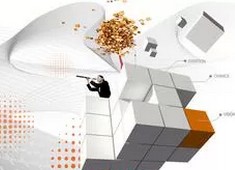Incorporating English language learning into physical education activities can be an innovative approach to engage elementary school students in both language acquisition and physical fitness. This integrated approach not only promotes language skills but also enhances cognitive development, cultural understanding, and overall wellbeing. Below is a comprehensive plan for implementing an English program within the context of physical education for elementary school students.
1.
2.
3.
4.
1.
Begin with basic sports vocabulary such as "soccer," "basketball," "running," etc.
Use visual aids, flashcards, and interactive games to reinforce vocabulary acquisition.
2.
Incorporate language learning games into warmup activities, such as "Simon Says" with English commands.
Utilize callandresponse exercises for practicing vocabulary in a fun and interactive manner.
3.
Introduce short stories or anecdotes related to sports and physical activities.
Encourage students to retell the stories using newly acquired vocabulary, fostering language production skills.
4.
Organize roleplaying scenarios where students act out various sportsrelated roles (athlete, coach, referee) using English dialogue.
Facilitate peer interaction to promote language practice and communication skills.
5.
Design fitness challenges such as relay races, obstacle courses, or yoga sessions.
Provide instructions and guidance in English, reinforcing language comprehension in a physical context.
6.
Introduce sports and games from Englishspeaking countries, such as baseball (USA), cricket (UK), or rugby (Australia).
Discuss cultural aspects and traditions associated with these sports, fostering global awareness among students.
1.
Provide professional development workshops for physical education teachers to familiarize them with the integrated English program.
Offer resources and teaching materials tailored to the specific needs of language learning in a physical education setting.
2.
Utilize multimedia resources such as videos, songs, and interactive websites to supplement classroom instruction.
Incorporate technologybased activities that engage students and enhance language learning experiences.
3.
Collaborate with English language teachers to reinforce sportsrelated vocabulary and concepts in English language classes.
Coordinate themed projects or presentations that combine language learning with research on sports and fitness.
4.
Encourage parental support and involvement by providing information about the program's objectives and activities.
Share resources and suggestions for practicing English language skills at home through sportsrelated games and activities.
1.
Observe students' participation and engagement during Englishintegrated physical activities.
Assess language comprehension through students' responses to verbal instructions and communication with peers.
2.
Evaluate students' ability to demonstrate understanding of sports vocabulary and concepts through roleplaying activities and fitness challenges.
Assess language production skills through oral presentations or storytelling exercises.
3.
Provide regular feedback to students on their language proficiency and participation in Englishenhanced physical education.
Encourage selfreflection and goalsetting regarding language learning and physical fitness goals.
Integrating English language learning into physical education offers a dynamic and holistic approach to education, fostering not only linguistic skills but also physical fitness, cognitive development, and cultural awareness. By implementing a welldesigned program with engaging activities and effective teaching strategies, elementary schools can create an enriching learning environment that promotes the overall wellbeing of students.
This comprehensive plan aims to provide a framework for developing and implementing an English program within the context of physical education, equipping students with valuable language skills and promoting a lifelong appreciation for both language learning and physical activity. Through collaboration, creativity, and commitment, educators can empower students to thrive academically, physically, and culturally.
This HTML representation is an outline of a proposed English program integrated into physical education for elementary school students. It covers objectives, curriculum structure, implementation strategies, assessment methods, and concludes with the potential benefits of such an integrated approach. Let me know if you need further adjustments or additional details!

随着2024年新澳门天天开好彩大全的发布,成语解释的落实问题引发...

近期,澳门六开奖结果2024开奖记录中的成语解释落实引发了广泛的...

在现代社会中,彩票作为一种娱乐方式,吸引了大量的人群参与。其中,...

在数字化时代,信息的传播速度和广度达到了前所未有的高度。近期,关...

随着2024年新澳免费资料大全的发布,成语解释的落实问题引发了广...